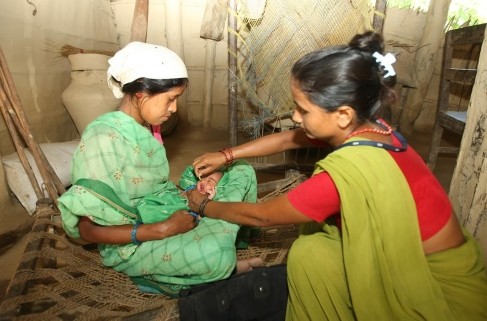
Nepal has been recognized as one of very few countries on track to meet more than one of the Millennium Development Goals (MDGs) in health. In particular, Nepal has been noted for its remarkable achievement in bringing down the number of maternal deaths (from 539 per 100,000 in 1996 to 281 per 100,000 in 2006) and for reducing under-5 child mortality (from 118 per 1,000 in 1996 to 54 per 1,000 in 2011). A study published in The Lancet, an international peer-reviewed public health journal, attributed a major portion of the reduction in maternal mortality to long-term investments by USAID as the largest donor working with the Government of Nepal to expand family planning counseling and service delivery.
In the area of child health, USAID supports the more than 50,000-strong national Female Community Health Volunteer Program in providing vitamin A supplementation, immunizations, family planning counseling, safe motherhood interventions, community-based integrated management of childhood illnesses, particularly the detection and treatment of pneumonia and diarrhea—the top two causes of child deaths in Nepal—and community-based newborn care package. Working in every district of Nepal, the volunteers are often the only health providers in remote areas. USAID continues to focus on scaling up sustainable, integrated, community-focused interventions as well as focusing on assisting the Ministry of Health and Population to deliver quality of services focusing on children, women, and marginalized communities.
- USAID supported the Government of Nepal in reducing deaths of children under 5 by 54 percent between 1996 and 2011; in the same period, Nepal achieved an increase in the use of modern contraceptive methods from 26 percent to 43 percent.
- USAID’s health programs reach 3.6 million children, more than 90 percent of Nepal's children, with lifesaving vitamin A, averting approximately 15,000 deaths among children under the age of 5 annually.









Comment
Make a general inquiry or suggest an improvement.